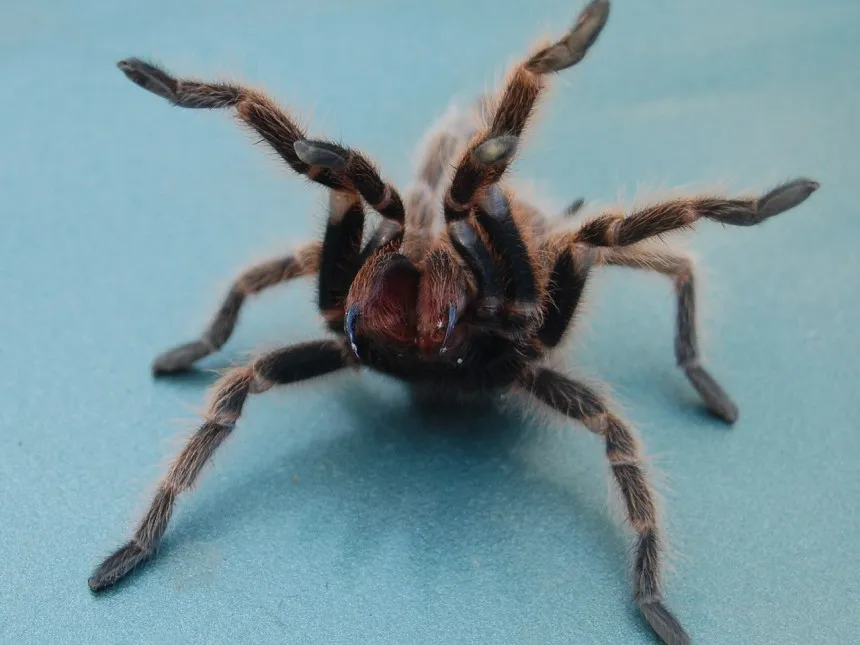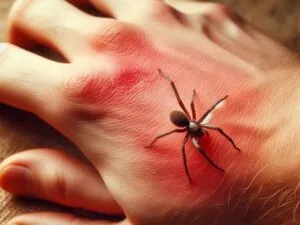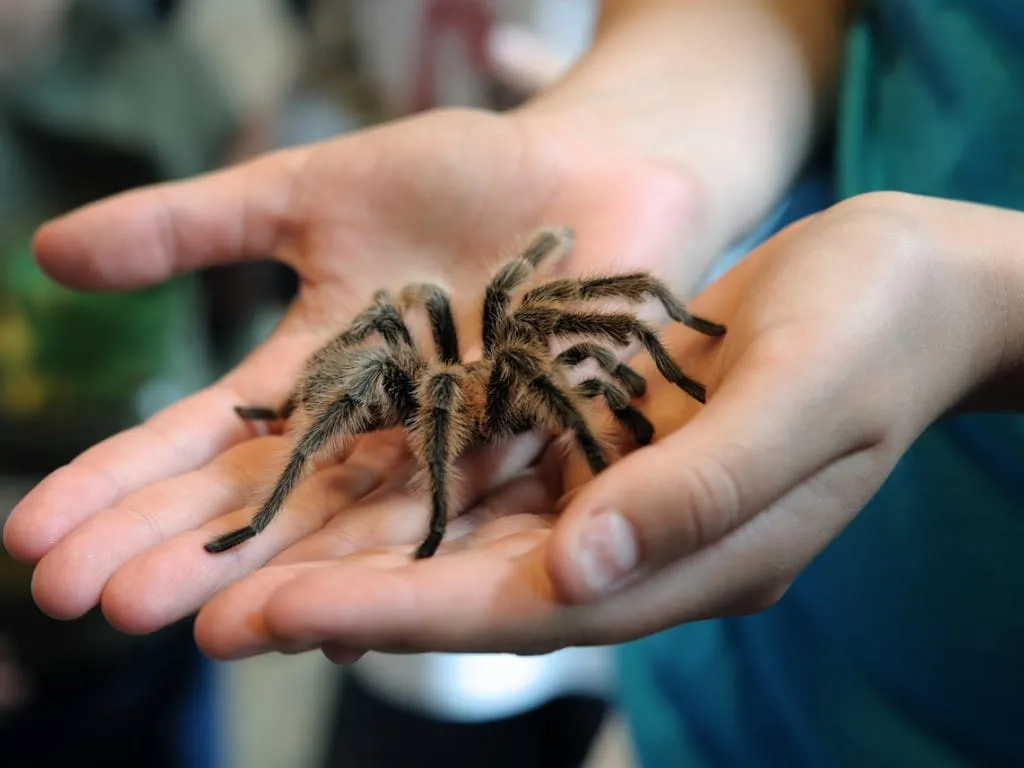The Shocking Reality of Tarantula Bites
The world of tarantulas, with their imposing size and hairy legs, often sparks a mixture of fascination and fear. Many are drawn to tarantula bite video footage seeking a visceral understanding of what happens when these creatures defend themselves. While tarantula bites are rarely fatal to humans, they can be a harrowing experience, filled with pain, discomfort, and a degree of psychological distress. Understanding the realities of tarantula bites, moving beyond the sensationalism, is crucial for responsible pet ownership, informed interaction with these spiders in their natural habitats, and proper response in the event of a bite. These creatures are not inherently aggressive and typically bite only as a last resort when threatened or provoked. The following facts shed light on the true nature of tarantula bites, providing insights that extend beyond the shock value of the video content available online.
Fact 1 The Venom
Tarantula venom is not typically life-threatening to humans, although the effects can be unpleasant. The potency of the venom varies between species, with some tarantulas having a more potent venom than others. The primary purpose of tarantula venom is to subdue prey, such as insects, small rodents, or birds. When a tarantula bites, it injects venom that contains a complex cocktail of enzymes and toxins designed to disrupt the nervous system and paralyze the prey. This venom can cause various symptoms in humans, ranging from mild to moderate. The severity of the reaction also depends on factors such as the amount of venom injected, the individual’s sensitivity to the venom, and the location of the bite. While a tarantula bite is not usually considered a medical emergency, it is important to monitor the symptoms and seek medical attention if the reaction is severe or if there are signs of an allergic reaction.
Symptoms of Tarantula Bite

The symptoms of a tarantula bite can vary widely, but common reactions include immediate pain at the bite site, which may feel like a bee sting or a sharp pinch. Redness, swelling, and itching around the bite area are also common. In some cases, there may be muscle cramps, stiffness, and localized numbness or tingling. Other potential symptoms include nausea, headache, and in rare instances, difficulty breathing or swallowing, which would indicate a severe allergic reaction requiring immediate medical attention. The onset of these symptoms can be quick, often appearing within minutes of the bite, though the full range of effects may develop over several hours. If you experience these symptoms after being bitten by a tarantula, it’s crucial to remain calm and seek medical advice to ensure proper care and monitoring for any potential complications.
Fact 2 Physical Effects
Beyond the initial pain and localized discomfort, tarantula bites can produce a range of physical effects. The injected venom can cause muscle spasms, which may manifest as cramps or stiffness, particularly in the area around the bite. Some individuals may experience flu-like symptoms, including fever, chills, and body aches. These effects are usually temporary and subside within a few days to a week, depending on the species of tarantula and the individual’s response to the venom. It is important to keep the bite area clean to prevent secondary infections, as the initial wound can be susceptible to bacteria. In rare instances, more severe physical reactions, such as an allergic response, may occur, requiring medical intervention to manage symptoms and prevent complications. The body’s reaction is highly variable, underscoring the need to approach each bite with careful observation and prompt medical consultation when necessary.
Swelling and Pain
One of the most immediate and noticeable physical effects of a tarantula bite is localized swelling and pain. The area around the bite will often become red, inflamed, and tender to the touch. The degree of swelling can vary, from a minor puffiness to a more significant enlargement, depending on the amount of venom injected and the individual’s sensitivity. The pain can range from a mild ache to a sharp, throbbing sensation, and it may radiate from the bite site. Applying a cold compress to the affected area can help reduce swelling and alleviate pain. Over-the-counter pain relievers, such as ibuprofen or acetaminophen, can also be used to manage discomfort. However, if the swelling is excessive or the pain is severe, it is advisable to seek medical advice to rule out any complications or allergic reactions.
Fact 3 Psychological Impact

The psychological impact of a tarantula bite can be significant, often extending beyond the immediate physical symptoms. The experience of being bitten by a large, venomous spider can be frightening, leading to feelings of anxiety, panic, and fear. The sight of the spider, the sudden pain, and the uncertainty about the potential effects of the venom can all contribute to a heightened emotional response. Many individuals who have been bitten report experiencing a surge of adrenaline, a racing heart, and a sense of unease. This can be particularly true for those with a pre-existing fear of spiders (arachnophobia). The psychological effects can linger even after the physical symptoms subside, with the victim remaining vigilant, fearful of future encounters, and possibly developing avoidance behaviors. Addressing the psychological aspects of a tarantula bite, through reassurance, education, and, if needed, professional counseling, is an important part of the recovery process.
Fear and Anxiety
Fear and anxiety are common psychological responses to a tarantula bite. The unexpected nature of the bite, combined with the potential for physical discomfort, can trigger a strong fear response. This fear can manifest as heightened vigilance, difficulty concentrating, and a general sense of unease. Individuals may become preoccupied with the bite, constantly monitoring the affected area and worrying about the potential for further complications. For those with arachnophobia, the experience can be particularly traumatic, exacerbating pre-existing fears and anxieties. The anxiety may extend beyond the immediate aftermath of the bite, leading to avoidance behaviors, such as avoiding the location where the bite occurred or being hesitant to interact with spiders in the future. Reassurance from medical professionals, coupled with education about the actual risks and the body’s natural healing processes, can help mitigate these fears and promote a sense of calm and control.
Fact 4 First Aid
Immediate and appropriate first aid is essential following a tarantula bite. The primary goal is to minimize the spread of venom, alleviate pain, and prevent complications. First, it’s important to remain calm and reassure the person who has been bitten. Wash the bite area thoroughly with soap and water. Apply a cold compress to the bite site to reduce swelling and pain. Elevate the affected limb to reduce swelling. Avoid applying a tourniquet or attempting to suck out the venom, as these methods are ineffective and can potentially cause more harm. Monitor the person for any signs of a severe reaction, such as difficulty breathing, swelling of the face or throat, or dizziness, and seek immediate medical attention if any of these symptoms appear. It is also advisable to seek medical advice, even if the symptoms are mild, to ensure proper care and monitoring.
Immediate Actions

The immediate actions to take after a tarantula bite are crucial for managing the situation effectively. The first step is to remove the person from the immediate area where the bite occurred to prevent further contact. Clean the bite area gently with soap and water to reduce the risk of infection. Apply a cold compress, such as a cloth soaked in cold water or an ice pack wrapped in a towel, to the bite site. This can help to reduce swelling, alleviate pain, and slow the absorption of venom. Keep the affected limb still and elevated above the heart. This can help to reduce the spread of venom and minimize swelling. It’s important to monitor the person closely for any signs of a severe reaction, such as difficulty breathing, swelling of the face or throat, or dizziness. If any of these symptoms occur, seek immediate medical attention. Even if the symptoms are mild, it’s advisable to seek medical advice to ensure proper care and monitoring.
Fact 5 Preventing Bites
Preventing tarantula bites is crucial for anyone who interacts with these spiders, whether as a pet owner, researcher, or someone who encounters them in the wild. The best way to prevent bites is to avoid handling tarantulas unless absolutely necessary, and if handling is required, it should be done with extreme caution and with the proper equipment. Always approach tarantulas slowly and calmly, avoiding sudden movements that could startle them. Wear protective gear, such as gloves and long sleeves, when handling tarantulas. Be aware that tarantulas can be defensive and may bite if they feel threatened or provoked. Never put your hands or fingers near a tarantula’s fangs. When keeping tarantulas as pets, provide a secure enclosure to prevent escapes and accidental encounters. Regular maintenance and cleaning of the enclosure can also help to reduce the risk of bites. Education about tarantula behavior and proper handling techniques is key to preventing bites and ensuring safe interactions with these fascinating creatures.
Handling Tarantulas Safely
Handling tarantulas safely requires a combination of knowledge, caution, and proper techniques. The primary rule is to handle them only when necessary, such as for enclosure maintenance or health checks. Before handling, research the specific species to understand its temperament and potential risks. Ensure the tarantula is calm and not agitated. Use a long-handled tool, such as a soft brush, to gently guide the tarantula onto a secure surface. Avoid grabbing or startling the spider. Always keep your hands away from the tarantula’s fangs. If you must handle the spider directly, wear protective gloves and long sleeves to minimize the risk of a bite. Handle the tarantula over a soft surface, such as a bed or a padded table, to prevent injury if it falls. Be aware of the tarantula’s posture and behavior, as signs of stress or aggression include raising the front legs, flicking hairs from its abdomen, or displaying a defensive posture. If the tarantula appears agitated, put it back in its enclosure and try again later. After handling, wash your hands thoroughly with soap and water.
Conclusion

Tarantula bite video footage, while often sensationalized, can offer a glimpse into the reality of these interactions. Understanding the true nature of tarantula bites, including the venom’s effects, potential physical and psychological impacts, and the importance of proper first aid and prevention, is crucial for anyone who encounters these spiders. By dispelling myths, promoting responsible pet ownership, and emphasizing the importance of safe handling practices, we can approach tarantulas with informed respect. The goal is to appreciate these creatures without unnecessary fear and ensure that interactions, whether in the wild or in captivity, are as safe and positive as possible. This knowledge empowers us to react appropriately in the event of a bite and contribute to the well-being of both humans and tarantulas.
